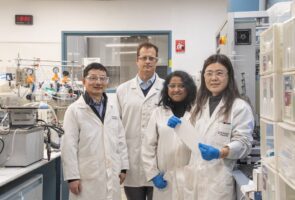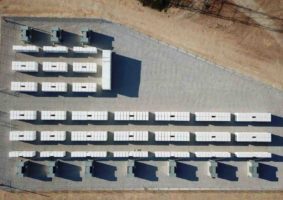Australian researchers have developed a new model of machine learning that will allow them to make, reproduce and test new perovskite solar cells within a matter of weeks, bypassing years of human labour and error.
The perovskite family of solar materials holds great promise for creating solar modules that would be flexible – easily deposited onto most surfaces and lightweight; as well as cheap to produce and as efficient as silicon-based photovoltaic materials.
But a number of key hurdles remain blocking perovskite-based solar cells from becoming commercially competitive. Among these is the time-intensive work of trying to nail down the right variations of the materials with the best efficiency, cost, and – most most elusive of all – durability.
As this MIT article explains, for researchers the process has been “a bit like looking for a needle in a haystack.” While the great hope to overcome this particular hurdle has been the advent of machine-learning.
In Australia, a team from RMIT University’s School of Science – Dr Nastaran Meftahi, Dr Andrew Christofferson and Professor Salvy Russo – has developed its own promising machine learning model for rapidly innovating perovskite solar cells.
The model is based on 16 new solar cells never seen before, that were created using artificial intelligence designed and characterised by Dr Adam Surmiak at Monash University, in collaboration with the ARC Centre of Excellence in Exciton Science.
Meftahi says that after Surmiak’s team had designed and characterised the new perovskite solar cells using his novel setup, her team at RMIT then used the cells to predict the properties of 256 new solar cell recipes.
“Then Adam, with the help of his group, developed 100 new solar cells and that let me predict the properties of 16,000,” Meftahi said.
The teams’ combined work, published in the journal Advanced Energy Materials, has resulted in reproducible perovskite solar cells with power-conversion efficiencies of 16.9% – the best-known result manufactured without human intervention.
And with a multimillion-dollar automated system for solar cell manufacturing being built by Surmiak at Monash, the model is expected to be capable of predicting huge volumes of promising chemical recipes for new perovskite solar cells.
“Until now, the process of creating perovskite cells has been more like alchemy than science – record efficiencies have been reached, but positive results are notoriously difficult to reproduce,” said Meftahi, the study’s lead author.
“What we have achieved is the development of a method for rapidly and reproducibly making and testing new solar cells, where each generation learns from and improves upon the previous.
“Critically, our machine learning model represents the starting point for further optimisation, both in terms of power-conversion efficiency and stability,” Meftahi adds.
But for now, she says, “a reproducible 16.9% power-conversion efficiency is better than an irreproducible 30%.
Meftahi says that at Monash, using Surmiak’s automated system, they willl soon be able to make 2,000 unique solar cells per day.
“We’re quickly getting to the stage where we’ll be able to predict the properties of millions of different cells.
“And you can’t do that with anybody else’s machine learning model, because you’d need additional information before you’ve made the cell.”
Meftahi says the machine-learning model and automated system can also potentially be used to crunch the numbers and run tests on other types of solar cells, including those made with silicon or organic materials.
“We are keen to work with partners in industry to further test and prototype our work so that it can be possibly commercialised in a range of applications,” she said.










